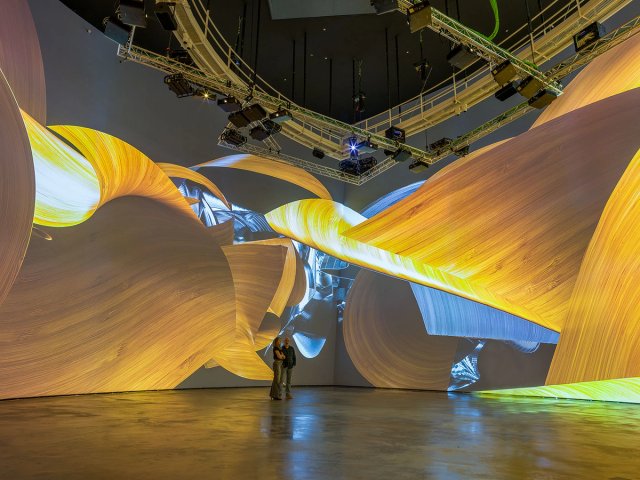Twenty years ago next October, Frank Gehry’s titanium Guggenheim Bilbao opened in the run-down, former industrial town in the Basque region of northern of Spain. Since then, the museum has attracted nearly 20 million visitors to the region, contributed almost €4 billion to the national GDP and maintains around 5,000 jobs. It is hardly surprising, then, that other cities around the world have wanted to emulate the so-called “Bilbao effect”.
To mark its 20th anniversary, the museum announced today (1 November) a special programme of events, including a retrospective of the US video artist Bill Viola (30 June-5 November 2017). The exhibition will chart Viola’s increasingly sophisticated use of digital media, ranging from early works such as The Reflecting Pool (1977–79) to more recent monumental installations, including Tristan’s Ascension (2005) and Inverted Birth (2014).
Other highlights include an exhibition focusing on the French avant-gardes of the late 19th century (Paris, fin de siècle: Signac, Redon, Toulouse-Lautrec and their Contemporaries; 12 May-10 September 2017), a rare display of the German painter Georg Baselitz’s Heroes series, created 50 years ago (14 July-22 October 2017), and an exhibition of Abstract Expressionist paintings drawn from the museum’s collection (3 February-4 June 2017). According to figures released by the museum ahead of the year-long anniversary programme, the Guggenheim Bilbao's collection is now valued at €729m–almost seven times the initial investment of €110m.
The Guggenheim Bilbao also aims to engage the local artistic community by organising a competition open to all young artists in the Basque Country. Winners will have their works shown at the museum next spring. Meanwhile, under the slogan “Art changes everything”, local residents will be invited to participate in a series of concerts and events scheduled for throughout the year.
Begoña Martinez Goyenaga, the deputy director of communication and marketing at the museum, says Bilbao has been transformed beyond recognition over the past 20 years. “When the Guggenheim first proposed building a European outpost in Bilbao, citizens didn’t really understand why the money wasn’t being spent on education or healthcare,” she says, noting that unemployment was high and morale low. “But within three years, the difference was dramatic. Now we have a clean river, trams and an underground infrastructure. It’s about far more than just a museum.”



